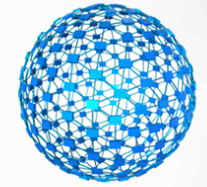Industrial Sector Seen Leading the IoT Shift

With networking companies and device makers jumping on the Internet of Things bandwagon, market drivers like expanding capacity via virtualized datacenters and the implementation of new standards like IPv6 are laying the groundwork for what could eventually become the Internet of Everything.
Industry observers predict that market segments like industrial will be among the first to make the Internet of Things a reality and a viable market for wannabe suppliers like Cisco Systems, Intel Corp. and others. Along with drivers like expanding datacenter and network capacity is the growth of IP-addressable devices. As nearly every object on Earth is eventually connected to networks and IoT use cases begin to emerge, "the commercial benefits are expected to drive increased connectivity," notes industry watcher IHS in a recent survey of IoT enabling technologies.
The market watcher makes the case that an industrial IoT with application segments ranging from building automation to energy could be the first to leverage the cloud and datacenter plumbing that will underpin the IoT. For now, IHS sees islands of connectivity that lack connections to the outside world. It also sees data analytics as a "long-term play" as the IoT eventually morphs to the Internet of Everything.
For now, the IoT and IoE remain conceptual frameworks. IHS took a crack at defining the IoE as a platform delivering "open access to data from one or more monitoring and control systems by third-party applications…."
According to the researcher, the evolution of the IoE has progressed to the point where embedded intelligence is readily available as is the collection and storage of sensor and other data. The next phases include boosting data access through an expanding hybrid cloud infrastructure, open interconnect standards and open APIs. The other part, and the likely added value to be derived from the IoE, is complex analytics, otherwise known as big data.
The Internet of Everything will come of age when "the true potential of a connected society" is realized, IHS predicted.
While market segments like telecommunications and consumer will have higher volumes, the industrial sector "represents a significant opportunity for IP addressable devices," the market watcher observed.
Forecasts on the number of connected devices run into the tens of billions by 2025. Moreover, Intel estimates that 40 billion sensors and 10 billion devices will be wirelessly connected by 2020.
In the industrial sector alone, IHS estimates that "industrial Internet connectable device" shipments could approach 4 billion units by 2019. "There has been a focus in recent years on driving increased intelligence into the network as part of a larger effort to make advancements in manufacturing, similar to the paradigm shift that occurred with the industrial revolution," IHS noted.
Indeed, industrial giants like GE, Siemens and Bosch are working closely with IoE vendors like Cisco, Intel and others on open interfaces and platforms as an ecosystem grows up around the current conceptual framework.
The German firm Bosch recently laid out an Industrial IoT strategy that takes into account three components: collecting sensor data to create a virtual view of the world; secure software platforms to connect devices and those devices to the Internet; and, once that data is analyzed, new applications and services that can be developed on the software platforms to add value for customers and generate revenue for vendors.










